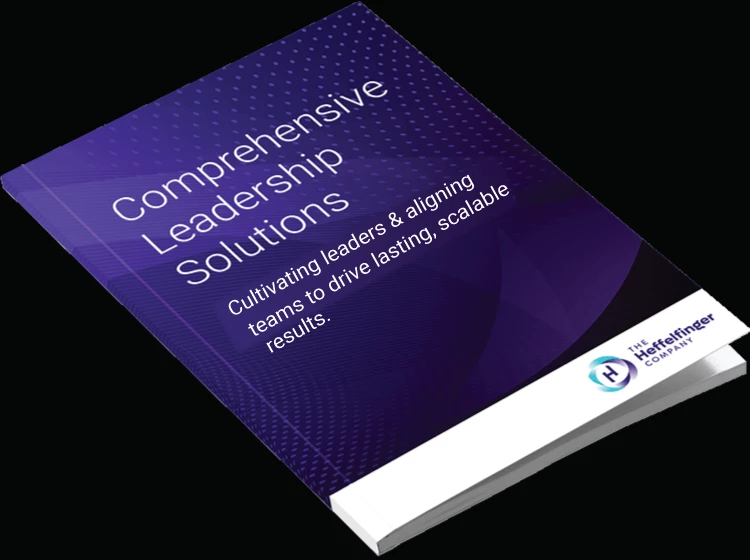"Coming together is a beginning. Keeping together is progress. Working together is success."
— Henry Ford
A team is a group of individuals with diverse skills and perspectives, united by a common goal and a shared sense of purpose. Effective teams drive innovation, enhance problem-solving, and foster a culture of continuous improvement. According to a 2014 study by Stanford University, teams that collaborate well are 50% more productive. By bringing diverse perspectives and ideas to the table, teams improve decision-making and create a more supportive and dynamic work environment. Leveraging the unique strengths and expertise of each member allows teams to tackle challenges more effectively and achieve results that often surpass individual efforts.
With the right support from company leadership, such as providing clear direction, resources, and continuous feedback, teams can excel. Leadership plays a crucial role in maintaining team motivation, resolving conflicts, and aligning team efforts with organizational goals. This support creates an environment where teams can collaborate effectively, adapt to challenges, and achieve outstanding results as they work through the stages of group development.
Stages of Group Development
There are many models for the stages of group development but this one stands the test of time.
The stages of group development, conceptualized by psychologist Bruce Tuckman in his 1965 paper entitled “Developmental Sequence in Small Groups”, describe the phases teams typically go through as they form and evolve into high performing teams. The initial four stages were Forming, Storming, Norming, Performing, and the fifth, Adjourning, was later added. Understanding these stages helps leaders and team members navigate the complexities of team dynamics, fostering a more effective and cohesive working group.
1. Forming:
In the Forming stage, team members come together and get to know one another. They are often polite and guarded, focusing on understanding the team’s purpose, structure, and leadership. During this period, members tend to rely heavily on the team leader for direction and guidance.
Example: When a company assembles a new product development team to create a groundbreaking gadget, the initial stage is forming. Team members, who come from various departments—marketing, engineering, design, and finance—meet for the first time. They discuss the project's goals, outline roles and responsibilities, and establish initial ground rules. The atmosphere is polite but somewhat reserved as everyone gets to know each other and understands their roles within the team.
2. Storming:
In the Storming stage, conflicts and competition emerge as team members assert their opinions and jockey for positions and roles. There may be power struggles, clashing personalities, and resistance to the task requirements or the leader’s authority. Managing conflicts and fostering a sense of unity are critical, as this stage can be turbulent and stressful.
Example: As the product development team starts working on the project, conflicts arise. The marketing team pushes for features that they believe will attract customers, while the engineering team raises concerns about technical feasibility. The design team disagrees with the proposed aesthetics, and there are disagreements about the budget. This stage is marked by tension and debates, with members expressing differing opinions and competing priorities. Navigating these conflicts requires effective conflict resolution and negotiation.
3. Norming:
During the norming stage, team members start to resolve their differences, establish norms, and develop stronger relationships. There is increased cohesion, collaboration, and a sense of belonging, with clearer roles and more effective teamwork. The main challenges involve balancing individual and team needs while maintaining momentum, as members may become complacent.
Example: After the initial turbulence, the product development team begins to establish norms and work more cohesively. Members start to appreciate each other's perspectives and contributions. They agree on a compromise where certain features are adjusted to meet both market demands and technical constraints. Regular meetings and clearer communication help in defining roles and expectations more precisely. The team develops a collaborative spirit, and processes become more streamlined.
4. Performing:
During the Performing stage, the team reaches optimal functionality and can focus on achieving goals efficiently. There are high levels of autonomy, productivity, and interdependence, with team members being motivated, knowledgeable, and capable of handling decision-making and problem-solving without supervision. The main challenges are sustaining high performance and managing potential burnout.
Example: With the norms in place, the product development team reaches its peak performance. Each member works efficiently in their role, and collaboration is smooth. The product design is finalized, engineering challenges are addressed, and marketing strategies are aligned with the final product features. The team meets deadlines, innovates effectively, and successfully develops the product. The high level of coordination and productivity results in the completion of the project ahead of schedule.
5. Adjourning (Terminating/Ending):
In this final stage, the team disbands after completing the task. Members reflect on their accomplishments, experience feelings of loss, and plan for future endeavors. The main challenges are ensuring proper closure, celebrating achievements, and supporting team members through the transition.
Example: Upon launching the new gadget, the product development team disbands. Members reflect on their experience, celebrate their success, and discuss what they’ve learned. They hold a debrief meeting to review what worked well and what could be improved for future projects. As the project concludes, some team members transition to new roles, while others move on to new projects. The sense of closure and accomplishment is shared, and the team’s collective achievements are recognized.
Teams can go back through stages as new members join the team causing the new to reform; as changes occur in projects, external pressure comes from outside the team, new demands are imposed on the team, etc.
Unleash the Power of Your Teams
By fostering an environment where every team member is empowered, engaged, and aligned with a common mission, your organization can achieve extraordinary results. Teaming does NOT happen by accident. Teams, like gardens and relationships required constant tending; high performing leaders and teams understand this.
The Heffelfinger Company’s team coaches are experts in transforming teams through tailored coaching programs. Our programs are designed to transform silo-thinking and silo behavior into greater engagement, foster collaboration, improve communication, and drive strategic alignment across all levels of your organization.
Discover how Heffelfinger Company can help you cultivate high-performing, agile, and resilient teams. Visit Heffelfinger Company’s Executive and Team Coaching services today to take the first step toward unlocking your team’s full potential.
Warmly,
James & Lori
James Jackman & Lori Heffelfinger
Sources:
Judith Stein.https://hr.mit.edu/learning-topics/teams/articles/stages-development. Accessed 7/26/2024.







